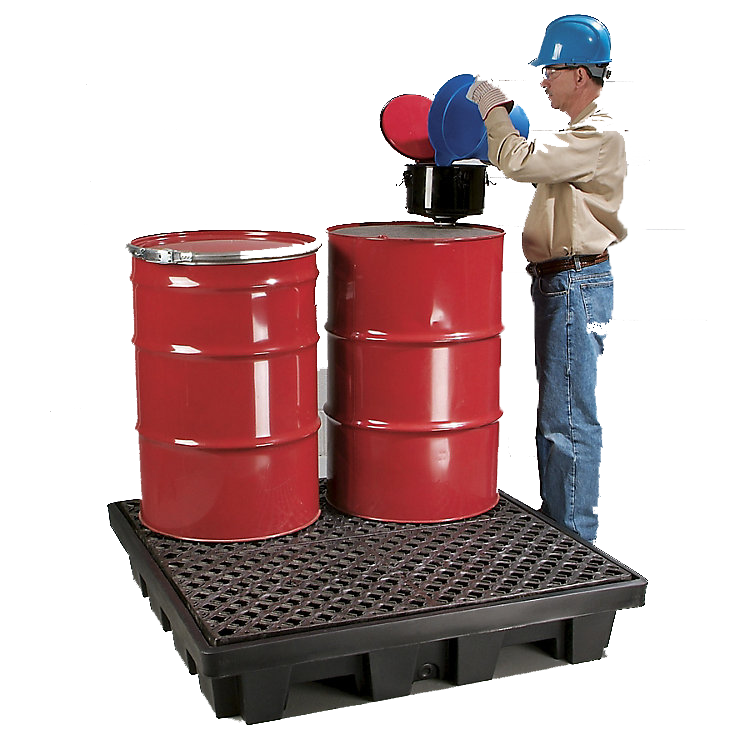Safeguarding the Environment: An In-Depth Look at Secondary Containment Systems
In
today's industrial landscape, environmental protection has become a
paramount concern. Secondary containment systems play a vital role in
preventing hazardous chemical spills and leaks that could potentially
pollute soil, water, and the surrounding ecosystem. This article
provides a comprehensive overview of secondary containment systems,
including their purpose, components, regulatory requirements, and best
practices. Whether you are a facility owner, operator, or simply
interested in environmental sustainability, understanding the importance
and implementation of secondary containment systems is essential for
safeguarding our planet.

1. Definition and Purpose
Secondary
containment refers to the preventive measures taken to confine and
control hazardous substances in the event of a storage tank failure,
piping breach, or accidental spill. The primary objective of a secondary
containment system is to contain and isolate any leaked or spilled
substances, preventing their migration into the environment. These
systems act as a crucial barrier between potential pollutants and the
surrounding ecosystem, minimizing the risk of contamination and
protecting human health, wildlife, and natural resources.
2. Components of a Secondary Containment System
A well-designed secondary containment system typically consists of several key components. These include:
a)
Containment Structure: The containment structure is the primary
physical barrier that surrounds the storage tanks or vessels. It can be
constructed of concrete, steel, fiberglass, or other impermeable
materials. The structure should be designed to withstand the anticipated
load, including the weight of the stored substances and environmental
factors such as seismic activity.

b) Secondary Containment Liner:
The liner is typically a chemically resistant material that is
installed within the containment structure to prevent any potential
leaks or spills from reaching the environment. Common liner materials
include high-density polyethylene (HDPE), reinforced polyethylene, or
polyvinyl chloride (PVC) geomembranes.
c) Leak Detection and
Monitoring Systems: To ensure the integrity of the secondary containment
system, leak detection and monitoring systems are essential. These
systems can include sensors, alarms, and automated monitoring devices
that detect leaks, spills, or any changes in fluid levels within the
containment area.
3. Regulatory Requirements and Compliance
Governmental
agencies, such as the Environmental Protection Agency (EPA) in the
United States, have established regulations and guidelines for the
installation and maintenance of secondary containment systems. These
regulations vary depending on the industry, the type of hazardous
materials being stored, and the size of the facility. It is crucial for
facility owners and operators to familiarize themselves with their
specific compliance requirements to avoid potential penalties and
environmental harm.
4. Best Practices for Design and Installation
Implementing
a high-quality secondary containment system requires careful planning
and adherence to best practices. Some key considerations include:
a)
Site Assessment: Conduct a thorough site assessment to identify
potential risks, including soil conditions, drainage patterns, and
proximity to water sources. This assessment will help determine the
appropriate size and type of containment system required.
b)
Proper Design: Work with experienced engineers and consultants to design
a secondary containment system that meets regulatory requirements and
industry best practices. Consider factors like load capacity, expansion
joints, and proper drainage.
c) Regular Inspection and
Maintenance: Establish a routine maintenance and inspection program to
ensure the integrity of the containment system. Inspections should
include checking for cracks, leaks, or deterioration, as well as
verifying the effectiveness of leak detection and monitoring systems.
5. Types of Secondary Containment Systems
Secondary containment systems can vary depending on the specific application and industry. Some commonly used systems include:
a)
Berms or Dikes: These earthen or concrete barriers are commonly used
for bulk storage tanks, creating a surrounding wall that contains any
potential spills or leaks.
b) Double-Walled Tanks: These tanks
consist of an inner storage tank surrounded by an outer containment
shell. In case of a leak or failure of the inner tank, the outer shell
acts as a secondary barrier, preventing any leakage from reaching the
environment.
c) Spill Trays and Pans: Typically used for smaller
containers, spill trays and pans provide a containment area directly
beneath the storage or handling equipment, capturing any spills or
leaks.

Secondary containment systems are vital safeguards against potential environmental disasters caused by hazardous chemical spills and leaks. By understanding the purpose, components, and best practices associated with these systems, facilities can effectively mitigate risks and protect the environment. Compliance with regulatory requirements and regular maintenance and inspection are crucial for ensuring the integrity of these systems. By prioritizing the implementation and maintenance of secondary containment systems, we can collectively contribute to a more sustainable and eco-friendly future.





